
This is something you don’t hear about every day. Jessica Allen, a surrogate mother from California, expected to give birth to twins, but she was stunned to discover that one of the children was biologically her own.
This rare genetic mishap wasn’t noticed straight away, which resulted in both children being given away to parents. However, once Allen found out, she fought to get her child back.

It’s safe to assume that this was a shock for everyone involved, but how did it happen? Well, it’s all down to a process known as “superfetation.”
There are two types of surrogacy. During “traditional surrogacy,” the woman acting as the surrogate is artificially inseminated with the father’s sperm. The woman then carries the baby and gives birth to it. She’s technically the biological mother, but she gives the baby away to the couple to raise as their own.
However, in this case, it seems that Allen was a “gestational surrogate.” This involves using IVF techniques to take the eggs from the mother, fertilize them with sperm from the father, and then implanting them into the uterus of another woman, who carries the baby until it’s born.
In this scenario, the surrogate has no genetic link to the child, as her egg wasn’t used. She may be the “birth mother,” but she’s not the biological mother.
As reported by the BBC World Service program Newsday, Allen seems to have ovulated while pregnant, an incredibly rare occurrence. One fertilized egg was from the intended mother, while the other was Allen’s, which was also fertilized shortly after the surrogacy began.
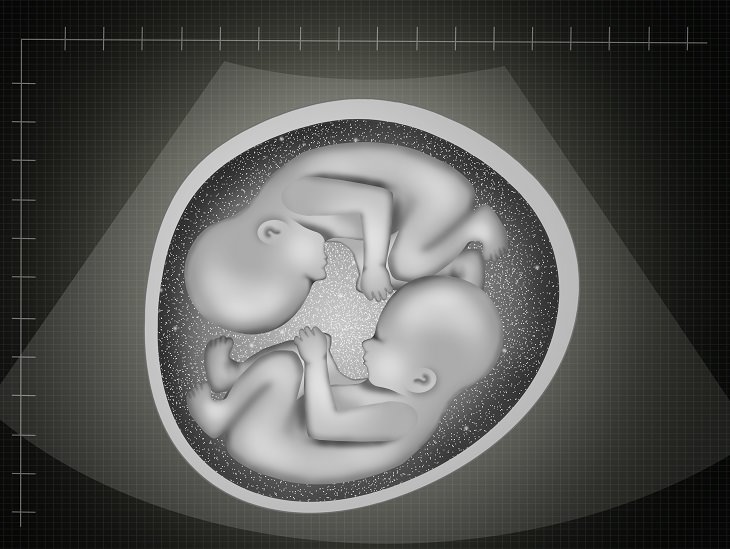
When this was noted, doctors originally assumed that it was one embryo that had split into two, and the mistake went unnoticed until the pregnancy was long over. This additional ovulation is what is known as superfetation. It involves the formation of a new embryo from a separate pregnancy cycle while another from the original pregnancy cycle is already present and developing.
There is a risk of the second embryo being born prematurely, but fortunately, Allen avoided this fate. When both herself and the intended mother had doubts about the identity of one of the babies, a DNA test was ordered, and the results revealed that Allen was the genetic mother. However, legally, she wasn’t one of the parents, and it took her 10 months to get her son back.
Source: iflscience
Images: depositphotos

15 People Who Have the STRANGEST Hobbies
Some people's hobbies, as it turns out, are stranger than others. Here are 15 bizarre yet cool hobbies keeping people busy
 10:19
10:19
Lift Your Spirits With These Animal Rescue Stories!
Forget about the damsel in distress. This time, nature calls, and we must answer!

The Weird and Wonderful History of Perfume!
Perfume has been around for centuries and this article takes a look at its strange history.

8 Surprising Things You Can Be Allergic To
Did you ever dislike something so much you joked you're allergic to it? Turns out some people actually suffer from the strangest allergies...
 5:10
5:10
The Tunnel People of Underground New York City
Would you call him homeless? This man lives a peculiar life in an expected location.
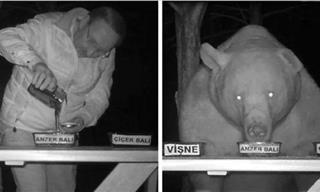
You Won't See Photos Like THESE Every Day!
Each of these images captures a rare moment or something you wouldn’t normally encounter.
 2:39
2:39
How a Principal Inspired Students With a Dance Routine
To make his students do more exercise, a Chinese principal asked them to dance…

What's Portmanteau? Surprising Etymologies of Common Words
If If you have ever said the words brunch, sitcom or spam, you have used portmanteaus. This is the fascinating origins story of many common words...

13 Geniuses, Who On Some Level, May Have Been a Little Mad
These geniuses may have been smart, but they are incredibly weird too!

You Won't Believe These Stories of the White House
The White House stands as a glorious monument to American politics, and in its 200 years of history, has had quite a few interesting encounter!
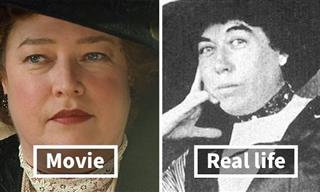
History vs. Hollywood: The Real Voyagers of the Titanic
A great many of the characters in the 1997 hit movie Titanic were based on real people. These are the stories and faces of the real voyagers of the Titanic.

How to Lend a Hand During Los Angeles Wildfire Crisis
Thousands of California residents have been forced to flee their homes because of the devastating LA wildfires. Here’s how to help victims.

Do You Know About the Mysteries of These Famous Icons?
What do you know about these intriguing works of art? Discover their mysteries here.

This Dog Saved Her Owner From Certain Death!
This dog proved her love for her owner in an amazing way: she used her incredible sixth sense to help save the woman's life.

You Know These 10 Foreign Words Without Even Realizing It
We’re willing to bet that you know more foreign words than you think, even if English is the only language you speak. Here’s why...
 5:36
5:36
The Most Beautiful Guitar Rendition of 'Moonlight' Sonata
Polish guitarist Marcin Patrzalek performs Beethoven's famous 'Moonlight' Sonata.
 4:18
4:18
Watch This 3-Year-Old Shine with the Orchestra
This three-year-old is a special talent!

The Invisible War: Deception and Espionage in WWII
Not many know about these incredibly dangerous secret operations that defined the Second World War.

24 Classic Books That Give You Important Life Lessons
Here is a look at ten great classic books that have some deep underlying moral lessons for all of us.

This Fascinating Tree Shows How Languages Are Connected
Most of the languages that we speak today can be placed into a couple of groups by their origin. Find out more here.

25 Old Photos That Show How Different the World Used To Be
Check out this amazing collection of vintage pictures that show us how much the world around us has changed.

6 World Famous Figures Who Kept Their Identity a Secret
Being famous doesn't have to mean everyone knows everything about you - these 6 enigmatic figures are world-famous yet no one truly knows who they are.

10 Quirky FACTOIDS About Music Everyone Will Love
These weird and wonderful facts about music will astound you!
 12:42
12:42
Let a Violin Rockstar Brighten Your Day
Professional violin player Ji-Hae's mission to bring beautiful music to everyone.

16 Wonderful Japanese Ideas We Should All Start Copying
The Japanese are unique. Their ways seem perfectly designed to help the population live happy fruitful lives. Here are 16 cool Japanese things we should copy.

The Astonishing Life and Philosophy of Ludwig Wittgenstein
It is the true story of Ludwig Wittgenstein, the man who sat in the same classroom as Adolf Hitler, became the protégé of the philosopher Bertrand Russell, and changed the face of 20th-century philosophy

These Useful Charts Are Handy In Various Life Situations!
With infographics and charts, you can learn and remember new information in such an easy and fun way!

Did You Know These Interesting Facts About Colors?
A short article explaining why and how specific colors were chosen for everyday objects like cabs and police uniforms.

Ruby Chocolate is More Than Just Its Pretty Pink Color
Ruby chocolate, the "fourth type of chocolate", has been gaining a lot of attention of late. Is it really a different type of chocolate?

Do You Know The Origins of These Common Phrases?
There are many phrases that we use in English that we never give a second thought to. Here are 9 common phrases with rather sinister origins.

The 20 Most Impressive and Random Collections People Keep
We have all heard of a stamp or comic book collection, but we bet you have never seen collections like these before.
 19:01
19:01
How Islam Separated Into Sunni and Shia: The Full Story
What happened, and why did it cause Islam to split into two factions?

These Things Will All Happen in the Next 24 Hours
The world is incredibly busy, and doesn't stop moving for anyone. Millions of things happen every second but these 19 things will happen over the next 24 hours.

Turns Out There’s a Chart for Literally Every Little Thing
Learn something useful and fun with these helpful charts!

8 Historical Misunderstandings of the First Christmas
Some of the details that you have heard about the first Christmas are completely wrong. Here are 8 things that we bet you didn't know about the first Christmas.
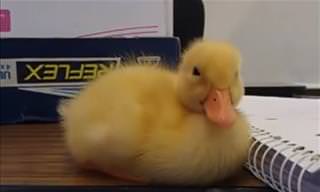 10:15
10:15
This Animal Video is Sure to Turn a Smile Into a Grin!
Get ready to wear a big smile and a giggle, this video will make your day!

The Story Behind One of History's Coolest Photographs
The Story Behind Ormond Gigli’s Photo: “Girls in the Windows”

What’s Written in the Sky? 8 Greek Constellation Myths!
Have you ever wondered how constellations got their names? These stories from Ancient Greece reveal the mythology behind 8 prominent constellations in the sky.
 29:45
29:45
Ancient Rome Had Different Kinds of Gladiators...
There’s much we don’t know about these amazing fighters and this documentary sheds some in-depth light on every known type of gladiator from Ancient Rome.

16 Absolutely Unforgettable Historical Photographs
Take a peek at these unforgettable 16 photos, and see history from a brand new perspective.

Remember Mr. Rogers? He Left Us With Many Great Quotes
Fred Rogers was a beloved children's television star during his life, but he was also an incredibly insightful & smart man. Here are 20 of his greatest quotes.

13 Honest Charts & Graphs That Describe Our Lives Too Well
Artist Irina Blok's illustrated charts and graphs about everyday life are so relatable.
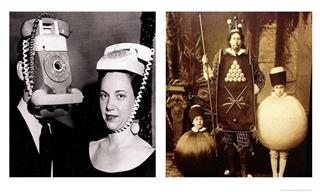
14 Interesting Exhibits from the "Museum of Curiosities"
The "Museum of Curiosities" is an online platform that has some startling and fascinating treasures.

The Unlikely Chance Encounters That Shaped the World
One chance meeting could change history. Check out the stories of the most world altering encounters that happened completely at random.

It's Amazing to Think How Much the Ancient Egyptians Knew
Ancient Egypt was a truly amazing civilization that reached an incredible level of knowledge. Enjoy these 10 examples of how advanced it was.

Learn the Secrets of the World's Most Persuasive Speakers
Persuasion is undoubtedly an art form, but how do you become recognized around the world for it? Learn 11 secrets of the most persuasive speakers alive.

7 Guns that Changed History
This article explores famous firearms’ backstories, the events they were part of, and the legacies they left behind.
To enable your Ad-Free Subscription, please fill the fields below
Your subscription was successful, now you can enjoy an ad-free experience!! Note: To make sure you get no ads, please make sure to log in to your account. If you are logged in already, then refresh the page. The subscription can be cancelled at any time.


